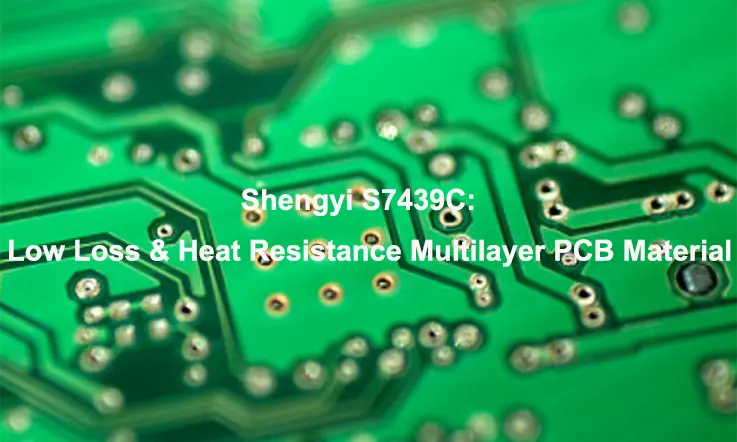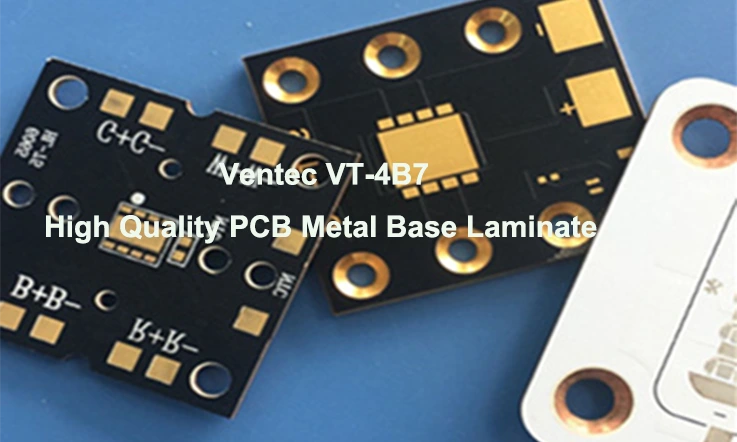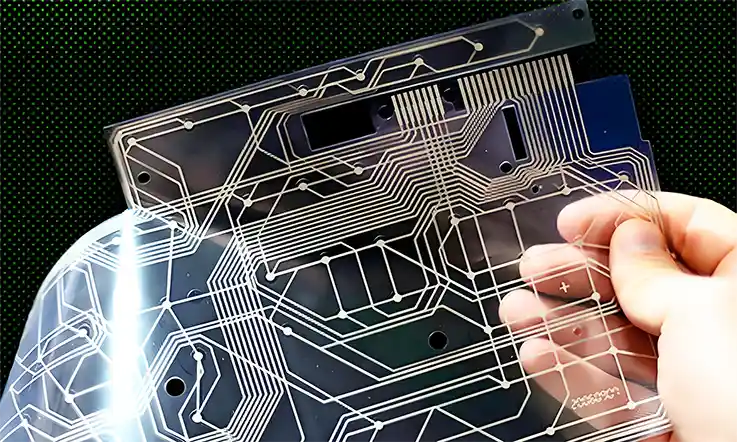
As a leading PCB manufacturer, we understand the critical role that PCB materials play in the performance and reliability of electronic devices. Shengyi S7439C PCB materials have emerged as a top choice for high-speed, high-temperature, and high-reliability applications. With its exceptional thermal reliability, high Tg and Td, and excellent electrical performance, S7439C offers unmatched advantages for a wide range of electronic applications.
In this article, we will delve into the superior features and benefits of S7439C PCB materials, highlighting why it stands out as a preferred option for demanding electronic manufacturing needs.
Shengyi S7439C
Low Loss & Heat Resistance Multilayer PCB Material
Shengyi S7439C is an exclusive, high-performance FR-4 PCB Materials meticulously engineered to cater to the unique requirements of multilayer Printed Wiring Board (PWB) applications. With a remarkable glass transition temperature (Tg) of 200℃(DSC), this proprietary materials offers exceptional electrical, thermal, and reliability performance. It is meticulously designed to meet the demanding standards of the PCB industry, ensuring optimal functionality and longevity.
Features of Shengyi S7439C
Key Features of Shengyi S7439C PCB Laminate Materials:
1. High Tg and Td: The S7439C laminate materials offer a high glass transition temperature (Tg) of 200℃ (DSC) and a high decomposition temperature (Td) of 383℃. These properties ensure excellent thermal stability and reliability.
2. Thermal Reliability: The S7439C materials exhibit exceptional thermal reliability, making them suitable for applications that demand consistent performance under challenging thermal conditions.
3. Resistance to Conductive Anodic Filament (CAF): These laminate materials demonstrate outstanding resistance to Conductive Anodic Filament (CAF) formation, ensuring reliable performance and longevity in demanding environments.
4.Low Dk/Df: With a low dielectric constant (Dk) of 3.66 and a low dissipation factor (Df) of 0.0060 (@10GHz), the S7439C materials offer excellent signal integrity and minimal loss, making them ideal for high-frequency applications.
Advantages of S7439C
The S7439C PCB substrate materials offer several advantages that make them a preferred choice for various electronic applications:
Superior Plated Through Hole (PTH) Reliability: The S7439C materials feature a lower Z-axis coefficient of thermal expansion (CTE), enhancing the reliability of Plated Through Hole (PTH) connections and reducing the risk of failures.
Superior Thermal Performance: These laminate materials excel in thermal management, efficiently dissipating heat and maintaining optimal operating temperatures in demanding applications.
Outstanding Electrical Performance: The S7439C materials deliver exceptional electrical performance, including low signal loss, low insertion loss, and excellent impedance control.
Exceptional CAF Resistance: The S7439C materials offer exceptional resistance to Conductive Anodic Filament (CAF) formation, protecting against potential electrical failures and ensuring long-term reliability.
Performance in Hybrid and High-Density Interconnect (HDI) Designs: These laminate materials are well-suited for hybrid and high-density interconnect (HDI) designs, enabling the construction of complex and compact PCB layouts with superior performance.
UL 94 V-0 Flame Rating: The S7439C materials have achieved a UL 94 V-0 flame rating, indicating their excellent fire resistance properties and compliance with safety standards.
Compatibility with Standard FR-4 PCB Processes: The S7439C materials are fully compatible with standard FR-4 PCB manufacturing processes, facilitating easy integration into existing production workflows.
Overall, Shengyi S7439C PCB laminate materials offer high Tg, exceptional thermal and electrical performance, reliable CAF resistance, and compatibility with standard processes, making them an excellent choice for demanding multilayer Printed Wiring Board (PWB) applications.
Disadvantages for S7439C
When choosing S7439C high TG substrate materials in PCB design and manufacturing, there are a few potential disadvantages to consider:
1.Cost:
High TG PCB substrate materials tend to be more expensive compared to standard FR-4 materials. The advanced properties and increased thermal performance of materials like S7439C contribute to their higher cost. This can impact the overall budget of the project, especially for large-scale production or cost-sensitive applications.
2.Processing Complexity:
High TG materials may require specialized manufacturing processes and equipment. These materials typically have higher glass transition temperatures, which can affect the curing and lamination processes during PCB fabrication. Special attention is needed to ensure proper handling, storage, and processing to achieve the desired results.
3.Material Availability:
Availability of high TG PCB substrate materials like S7439C may be limited compared to standard FR-4 materials. This can pose challenges in sourcing and procurement, particularly for specific thicknesses or large quantities. It’s important to ensure a reliable supply chain and plan for material availability in the long term.
4.Compatibility with Existing Infrastructure:
Integrating high TG PCB substrate materials into existing manufacturing infrastructure may require adjustments or upgrades to equipment, processes, and testing methodologies. Compatibility challenges should be evaluated to ensure smooth integration and minimize disruptions to the production workflow.
5.Design Considerations:
High TG materials like S7439C may have specific design considerations and requirements. These can include factors such as controlled impedance, thermal management, and material thickness limitations. Designers need to carefully consider these aspects to optimize the performance and reliability of the PCB.
6.Potential Delamination Issues:
High TG materials tend to have lower resin flow during lamination, which can lead to potential delamination issues. Proper control of lamination parameters, such as pressure, temperature, and time, is crucial to prevent delamination and ensure the integrity of the PCB.
7.Learning Curve:
Working with high TG PCB substrate materials may require additional knowledge and expertise compared to standard materials. Designers and manufacturers may need to familiarize themselves with the unique characteristics, processing requirements, and potential challenges associated with these materials.
Despite these potential disadvantages, high TG PCB substrate materials like S7439C offer significant advantages in terms of improved thermal performance, enhanced reliability, and extended operating temperature ranges. Careful evaluation of the project requirements, cost considerations, and manufacturing capabilities is necessary to determine whether the benefits outweigh the potential disadvantages when selecting S7439C high TG PCB substrate materials.
What Defferent Between S7439C and S7439G?
Shengyi S7439C and S7439G are both high-performance PCB (Printed Circuit Board) substrate materials with similar characteristics, but they do have some differences.
One of the main differences between S7439C and S7439G is their glass transition temperature (Tg) and decomposition temperature (Td). S7439C has a Tg of 200℃ and a Td of 383℃, while S7439G has a Tg of 189℃ and a Td of 405℃.
Additionally, S7439C and S7439G may have different dielectric constants (Dk) and dissipation factors (Df), which can impact their electrical performance in high-frequency applications. It is essential to consider these differences when selecting the appropriate material for specific electronic designs.
Shengyi S7439C :Applications
Shengyi S7439C PCB laminate materials find applications in various industries and demanding electronic systems. Some of the key applications include:
High-Speed Servers:
The S7439C materials are well-suited for high-speed server applications, providing reliable performance and signal integrity in data centers and server farms.
High-Speed SANs (Storage Area Networks):
These laminate materials are suitable for high-speed SANs, ensuring efficient data transfer and reliable connectivity in storage networking systems.
Switches & Routers:
The S7439C materials are ideal for switches and routers, enabling the construction of high-performance networking equipment with excellent signal integrity and reliability.
High Layer Count Backplanes:
These laminate materials are suitable for high layer count backplanes, facilitating the design and fabrication of complex and dense interconnects in advanced electronic systems.
High Layer Count Line Cards:
The S7439C materials are well-suited for high layer count line cards, providing reliable electrical performance and thermal management in communication and networking equipment.
Multiple 2 oz. Copper Layers:
With their exceptional thermal performance and reliability, these laminate materials support the use of multiple 2 oz. copper layers, allowing for efficient heat dissipation and high current carrying capacity.
0.8mm Pitch:
The S7439C materials are compatible with 0.8mm pitch designs, enabling the construction of fine-pitch electronic components and facilitating miniaturization in high-density applications.
Burn-in Boards:
These laminate materials can be used in burn-in boards, providing the necessary thermal and electrical performance for testing and stressing electronic components during the burn-in process.
HDI Builds:
The S7439C materials excel in HDI (High-Density Interconnect) builds, enabling the construction of complex and compact PCB layouts with multiple layers, fine features, and high reliability.
Hybrid Builds:
These laminate materials are suitable for hybrid builds, combining different technologies and components in a single PCB assembly, such as combining semiconductor devices with passive components or integrating different materials.
Military & Aerospace:
The S7439C materials meet the stringent requirements of military and aerospace applications, offering high reliability, thermal performance, and resistance to harsh environmental conditions.
Base Station:
These laminate materials are well-suited for base station applications, providing reliable connectivity and performance in wireless communication systems.
High-Performance Computing:
The S7439C materials are suitable for high-performance computing applications, supporting the demanding performance and reliability requirements of supercomputers and data centers.
Conclusion
Shengyi S7439C PCB materials have proven to be a game-changer for electronic manufacturers, offering superior performance, reliability, and versatility. The material’s high thermal reliability, excellent electrical properties, and compatibility with standard manufacturing processes make it an ideal choice for high-speed servers, switches, routers, military and aerospace applications, and more. As electronic technologies continue to advance, S7439C remains at the forefront of innovation, driving the next generation of high-performance electronic devices. Embracing S7439C PCB materials is not just a choice for today but an investment in the future of electronic manufacturing.





